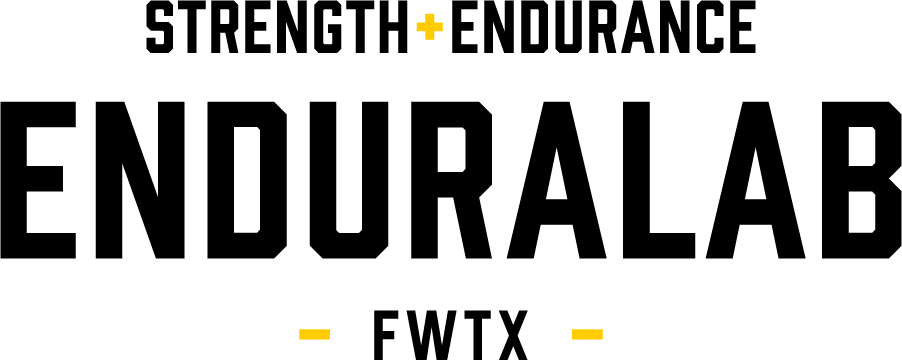The perfect running shoe fit is something that a lot of running stores promise, but very few deliver. Today we are going to educate and empower you throughout the fit process to ensure that you find a running shoe that works for you.
At enduraLAB, you’ll hear us say that a shoe is just a tool, and not a “magic pill” that can fix your running woes. However, improper shoe sizing and shape can result in ingrown toenails, bunions, corns, hammer toes and hallux valgus. Shoes that don’t fit your feet correctly can also lead to muscular imbalances in the body, resulting in foot, knee and hip injuries. Yes, the right shoe fit is that important.
We’ve had several athletes walk through our doors in the wrong shoes or the wrong fitting shoes, and when asked how they selected their footwear we most often hear:
- “My running buddy loves this shoe.”
- “I just watched Meb run in this shoe and win the Boston Marathon.”
- “The advertising says it will make me run faster.”
- “The employee at the shoe store made me stand on this magic shoe fit contraption.”
- “I like the colors.”
And the list goes on, but what we have to understand is that our feet and corresponding shoe fit is individual. When we look at the elements of a “good” running shoe for our athletes we like to see:
- A neutral shoe. We know this is going to get some push back, but the studies don’t lie. Stability and Motion Control shoes don’t prevent injuries. In fact, they may actually increase your risk of injury. We’re amazed that stores can still sell them. And by the way, if all of this new technology (foam, gel, plates, overlays) really work, why are injury rates still on the rise? Baseline, you want a shoe that doesn’t interfere with the natural movement of your foot. From there you work to strengthen the imbalances that might be causing some of your injuries.
- 10mm (or less) differential. The differential is simply the difference between the heel and toe stack, or height, of a shoe. Stack height plays a big role in alignment during running and also allows you to utilize the natural rebound of your lower leg. Several shoe companies offer models that fit this standard, but salespeople are often quick to put someone in a higher differential to help with an injury (think plantar fasciitis). Again, the shoe doesn’t fix the problem. It would be like going to the eye doctor, complaining about a vision impairment in one eye, and walking out with an eye patch and a prescription to just use the “good eye”.
- Least amount of cushion you’re comfortable with. The mind is a powerful thing and comfort can be one of the most important aspects of a shoe. With that in mind, the more stack height and cushion in a shoe can result in a loss of proprioception (balance) and stability. Studies are coming out about the maximalist or mega-cushion shoe trend that has caught fire. Now we’re finding out that all of that cushion may actually be hurting you. How is that? Here’s a quick experiment you can do at home. Go balance on one leg and time yourself–hands on hips, one leg up with the shin parallel to floor–and see how long you can hold it. Now go get a pillow or couch cushion and try it again. A lot tougher? Now imagine running with that same instability…for more than 10,000 steps an hour. Now that’s not a green light to go run barefoot on man-made surfaces, but it is a reason to choose a shoe with the least amount of cushion that still provides comfort.
Now that you understand what goes into a “good” running shoe, let’s discuss the right fit. Shoe companies make shoes for feet of different sizes and shapes, so all may not be right for you. Here’s what you should know to get that perfect fit:
- Shop for shoes at the end of the day. This is one of the old rules that we can get behind. Our feet swell and flatten throughout the day, so we want to find our fit when our feet are the biggest.
- Wear the socks you’re going to run in. Another oldie but a goodie. Socks can take up an eighth to a quarter of an inch depending on the amount of cushion and material. Considering a half size is usually a third of an inch, socks can determine your correct shoe size!
- Perform the Insole Test. If we could get everyone to size this way, we would reduce 99% of all improper shoe fits. It’s simple, take out the removable insole and place it on the ground. Place your foot on top of the insole and put the majority of your bodyweight into that side (splaying and spreading your foot). If your foot spills over the insole or there is not a half inch of room in front of your toes, it doesn’t fit. (Click to see video on the Insole Test)
- Once you find the right size, go another half size up. In fact, you can keep going up until the shoe is obviously too big. When worrying about the length of the shoe, we just want to make sure you have at least a half inch of room up front and that there is no heel slip in the back. We’re more worried about the shape of the shoe matching the shape of your foot.
- Try on both shoes and go for a run. Seems to be common sense, but if you want to find a shoe to run in you should really test it while running. Shoes are going to feel different running than walking around on the shoe store floor. In fact, you want to even try to match the surface you’ll be running on, not carpet or a fancy treadmill with cameras. Shoe store won’t let you run outside? Maybe you should go down the street to their competitor.
In the end, our role here at enduraLAB is to educate and empower the running community on how to find the right shoe fit for a lifetime of healthy running.



